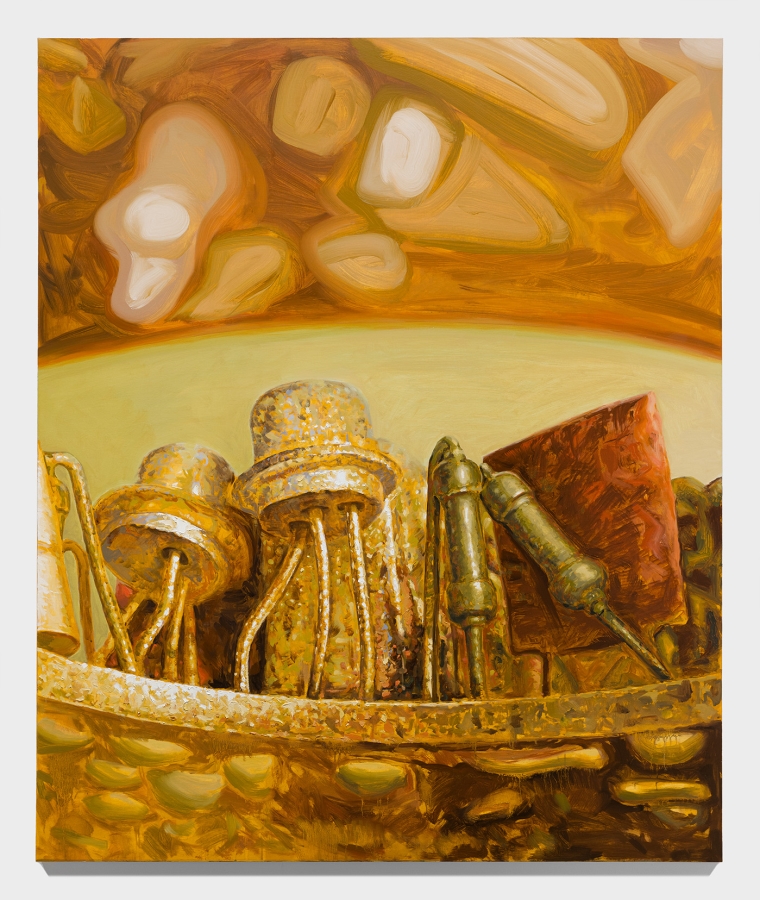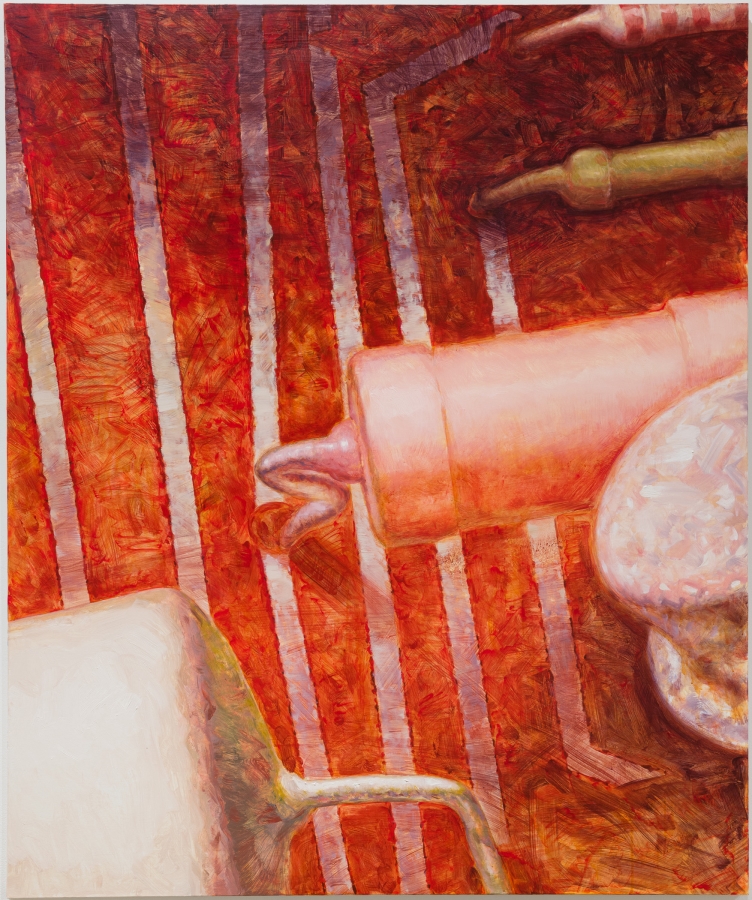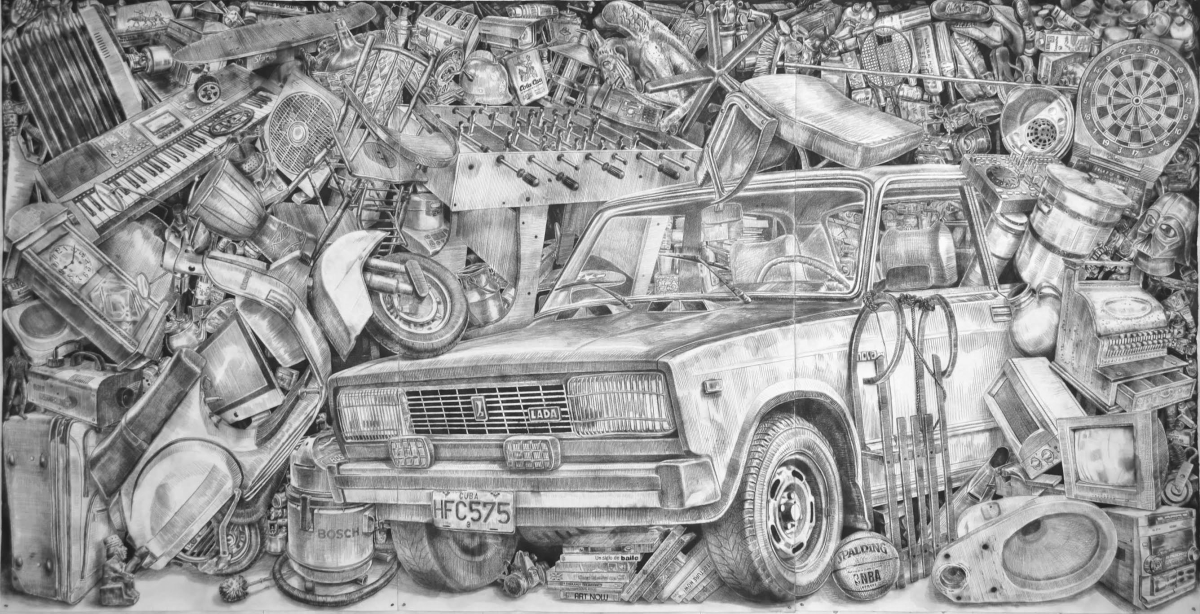
Artist’s Biography
Jairo Alfonso is a Cuban-born artist living and working in Hudson County, New Jersey. He was born in Havana, Cuba, in 1974. He graduated from the Instituto Superior de Arte (ISA) and from the Escuela Nacional de Arte (ENA) in Havana. He moved to the United States from Spain in 2013.
Alfonso’s work has been featured in more than 10 solo exhibitions worldwide, including Instrumentaciones, Centro de Arte Contemporáneo Wilfredo Lam, Havana, Cuba (2000); and in over 60 group shows, including Useless: Machines for Dreaming, Thinking, and Seeing, the Bronx Museum of the Arts, New York (2019); Flow: Economies of the Look and Creativity in Contemporary Art from the Caribbean, IDB Cultural Center Art Gallery, Washington, DC (2014); Cuban America: An Empire State of Mind, Lehmann College Art Gallery, New York (2014); Occupying, Building, Thinking: Poetic and Discursive Perspectives on Contemporary Cuban Video Art (1990–2010), University of South Florida Contemporary Art Museum, Tampa (2013); Politics: I don’t like it, but it likes me, Laznia Centre for Contemporary Art, Gdansk, Poland (2013); Killing Time: An Exhibition of Cuban Artists from the ’80s to the Present, Exit Art, New York (2007); and Batiscafo / Proyecto Circo, Eighth Mercosul Biennial, Porto Alegre, Brazil (2011).
He has participated in various artist residencies, including the Fountainhead Residency, Miami, Florida (2019); Marble House Project, Dorset, Vermont (2015); and Guttenberg Arts, New Jersey (2014). He was the recipient of a Pollock-Krasner Foundation Grant in 2017. Alfonso’s work appears in private collections as well as in the public collections of the Pérez Art Museum, Miami, Florida; the Museum of Latin American Art, Long Beach, California; the permanent collection of the province of Hainaut, Belgium; and the Havana Galerie Collection, Zürich, Switzerland, among others.
Bio source: Jairo Alfonso
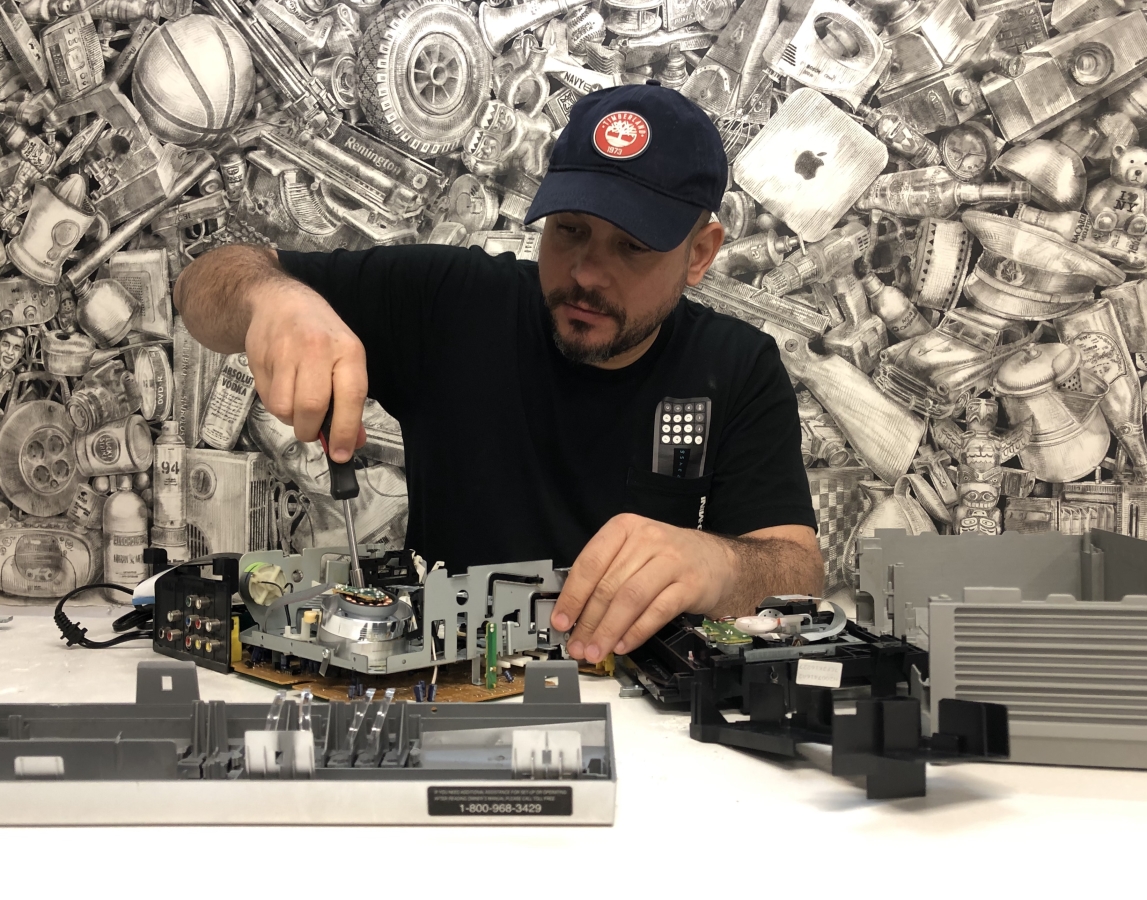
Interview
Artist: Jairo Alfonso
By Carol Real
Who were your artistic influences growing up in Havana, Cuba?
When I was young, I was introduced to sculpture in children’s workshops that were offered at the cultural center in my hometown, Aguacate, which is 70 kilometers from Havana. My first influences or aesthetic awakening came perhaps from observing self- taught painters in my hometown, who created oil on canvas landscapes of the town and surrounding areas. I remember Arquimides Hernandez and Oscar Rodriguez with special affection. Years later, I studied at various art schools where I acquired varied influences.
In my early education, there was an emphasis on the technical aspects of drawing, painting, sculpture, and printmaking. I culminated my studies at the Instituto Superior de Arte, where I focused on the development of my personal style. Back then, I worked with natural materials such as clay, wood, etc. I am strongly connected to the symbolic meaning of materials, in some cases exploring animistic associations and more metaphysical connotations. Several colleagues from those years and I were fascinated by the work of Juan Francisco Elso Padilla, a Cuban artist whose work was recently exhibited at El Museo Del Barrio.
What did you encounter when you came to New York?
Arriving in New York was and continues to feel like an infusion of cultural energy. I remember my first impression of the city’s diverse architecture, and my initial visits to Chelsea and its many galleries and exhibitions, ranging from the most emerging to the most established artists. The first visits to the city’s museums, the first time at the opera, the first Broadway show, the first trip to Yankee Stadium etc. Since I live on the other side of the Hudson River, every time I return to Manhattan I feel the same fascination as the first time and I return to my studio charged with energy.
What or who inspires as artist? Which artists do you admire?
For many years, I have been attracted to objects, their aesthetics, and what they represent. I am interested in the relationships and interactions we have with them. I like the idea of the archaeologist’s gaze that allows you to distance yourself from the oldest objects to the most recent and later translate various existential reflections in the language of art. It is always difficult to make a list of artists that I admire. At this moment, the painting of Giorgio Morandi fascinates me, the painting of Giorgio de Chirico intrigues me, and the great work of Roman Opalka captivates me.
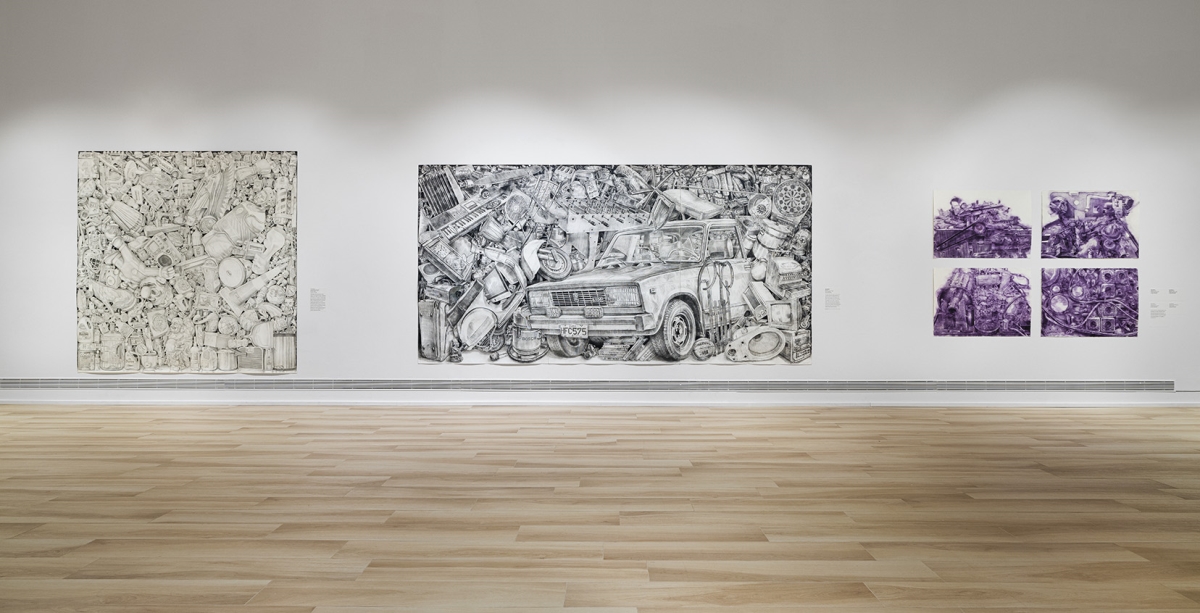

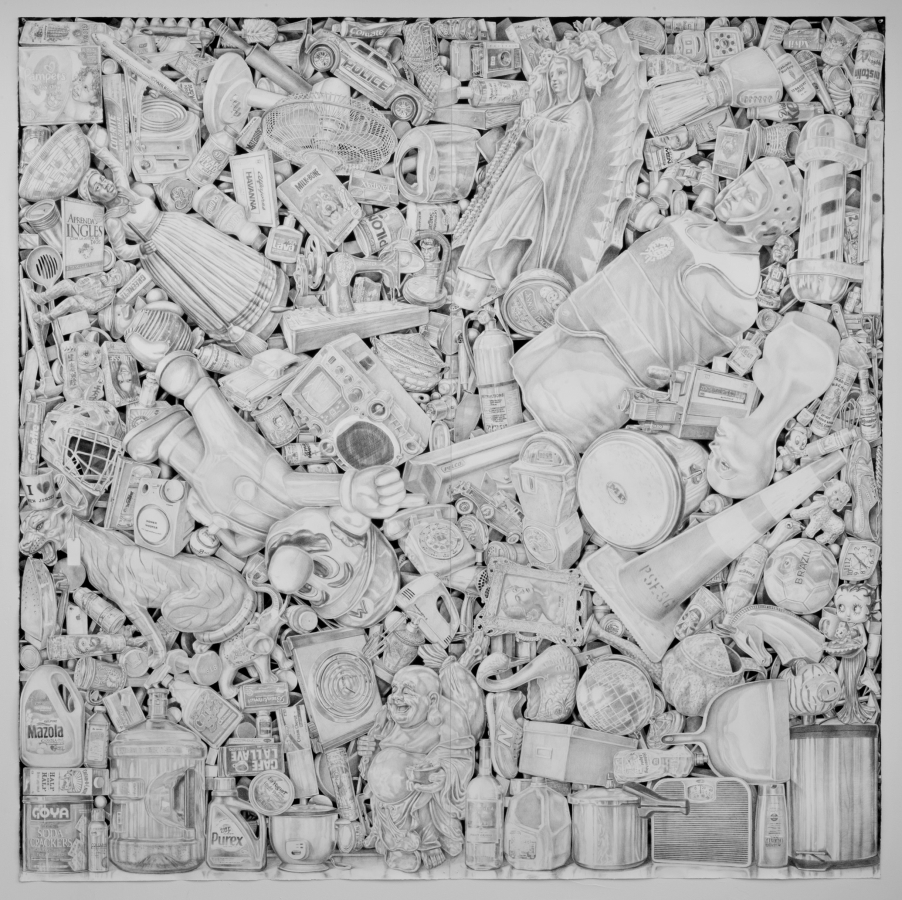
How and when did you develop your particular style and interest in hoarding and disassembling?
This series began in 2010 when I was living in Madrid. I experienced a significant to transition from an environment of total material scarcity such as Cuba to a city full of objects not only for daily consumption but also so many antique shops and the “rastro” which is a flea market that opens every Sunday in city streets. In this context, I began drawings of life size objects against a white backdrop as if looking inside a box. I became obsessed with owning these objects through these drawing. In that same flea market in 2012, I bought a German Telefunken radio, which I disassembled and later drew in a series depicting disassembled communication devices. I was interested in delving into the“sound architecture” of this device like an anatomical dissection. Later this radio was the subject of a video that chronicles the 1960s through some of its most important political, cultural, social, scientific events.
Describe your creative process. How long does it typically take to create a painting or drawing?
The production of both paintings and drawings takes several weeks and, in some cases, months depending on the size of the work. For the drawings of accumulated objects, I first create a photographic image of the objects and their measurements, and then I fill the pictorial space from bottom to top, drawing each object to life scale like someone who fills a “box.” At the end, the total number of drawn objects is the title of the work. In the case of painting, it is about choosing an object that is later disassembled, then I take a series of photographs with an endoscopic camera. From the selected photo, I erased the numbers and letters that represent voltage and other technical data using Photoshop to achieve a more structural and monumental-looking image associated with urban landscapes. Then, I interpret the image through the medium of painting using the traditional technique of Venetian grisaille. In the case of the works in the recent show, I used a limited palette of only four colors known as the Zorn palette. (The painter Swedish Ander Zorn used this palette in many of his works). I chose warm colors to emphasize the earthy colors suggested by the native names of the brands of the appliances. I could not accurately calculate the time taken to create each work but it is certainly a long process to reach the final result.
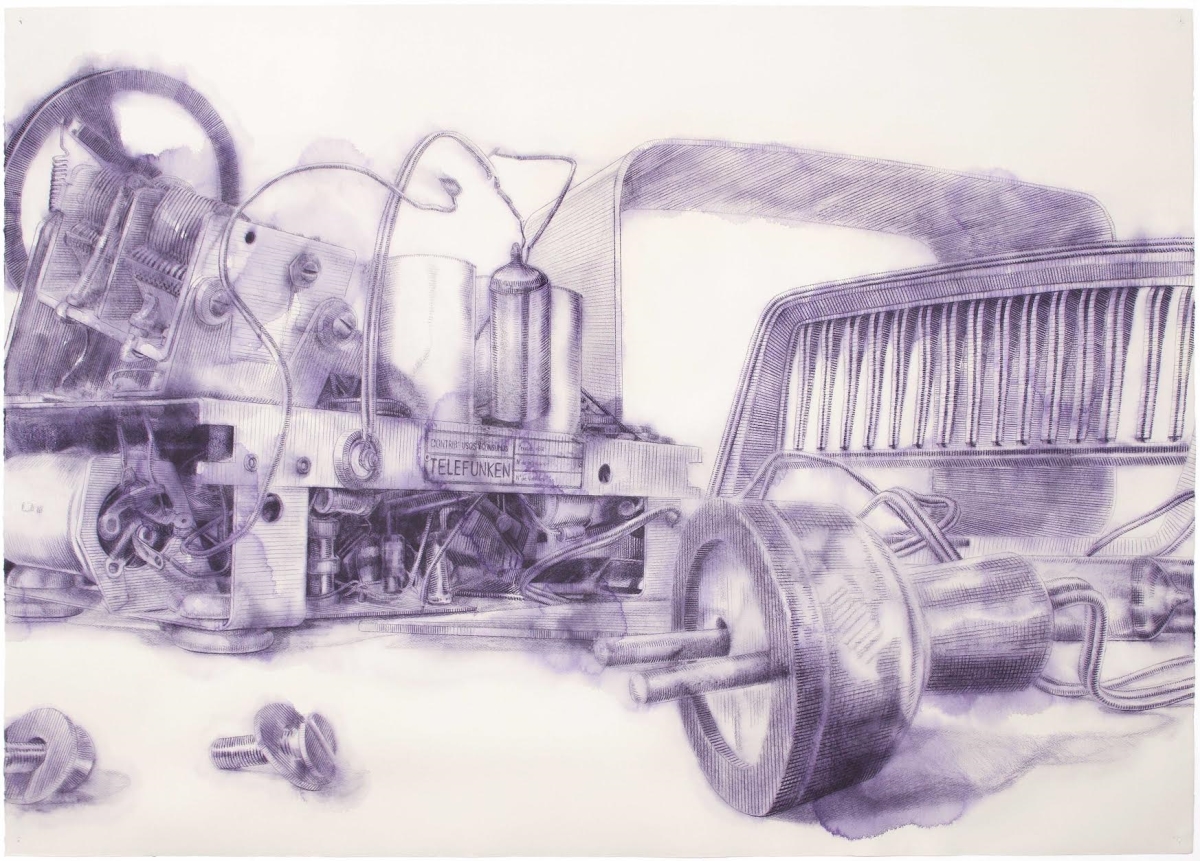
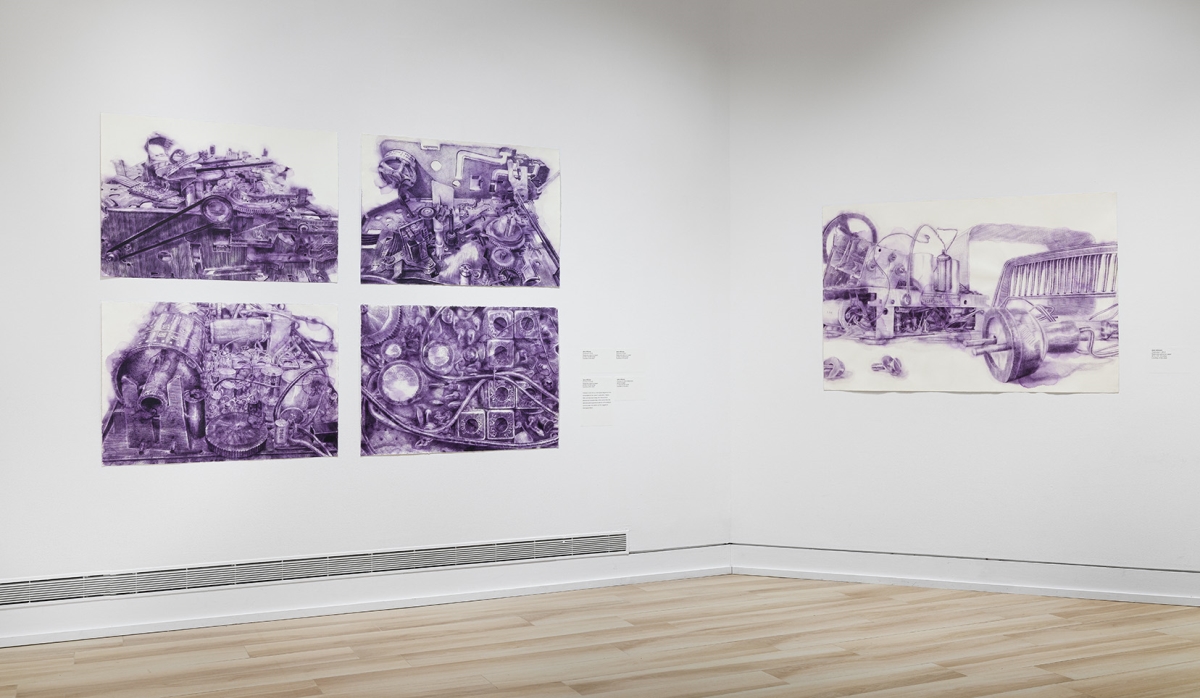
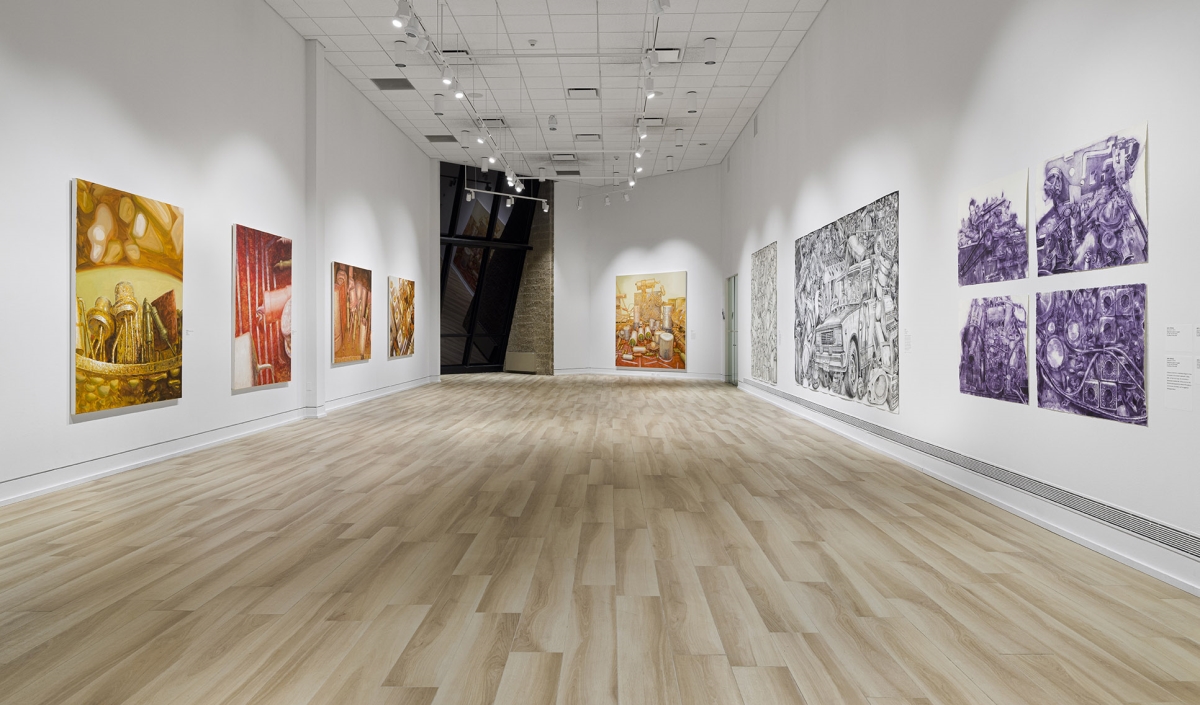
Your work oscillates between painting, sculpture, installation, video, performance, and mixed media works on paper. Which medium feels more satisfying for you?
I enjoy all media; they are all tools of expression that I choose according to the subject matter at hand. Installation, sculpture and performance are media that I explored many years ago. In the last ten years, I have become focused on video, drawing, and now painting, which I really enjoy. I am focusing on painting for a year, returning to it after a long time without painting. I feel that I am relearning and learning it. I have become literally obsessed with it for months and consuming a lot of work and theory on the subject.
What can you tell us about your recent exhibition, Objectscapes? How would you like people to engage with these works?
This exhibition brings together a selection of works from the last ten years and includes drawing, video, and painting. It is a selection of works that are concerned with the cultural and social meaning of everyday objects. I hope that viewers can immerse themselves in an experience that, although related to the personal, reveals universal meanings and themes of contemporary life. In this exhibition, one can appreciate works that speak to the consumer obsession of our current life. The video investigates the decade of the 1960s, which was prolific and intense in cultural and political events that formed the basis of what we live today. The endoscopic landscapes series of paintings investigates the control of information through the media, analyzing the period of the Cold War from the Cuban experience, and capturing moments and situations that also possess a universal message.
What are you currently working on? Do you have any ideas for future works or series?
I am currently finishing the series of paintings related to three Cuban devices (Taino/ Siboney/Caribe). I plan to create some videos related to the devices, using the endoscopic camera. In the near future, I plan to develop a series of paintings exploring the “inner architecture” of other devices from different origins and time periods.
Editor: Kristen Evangelista
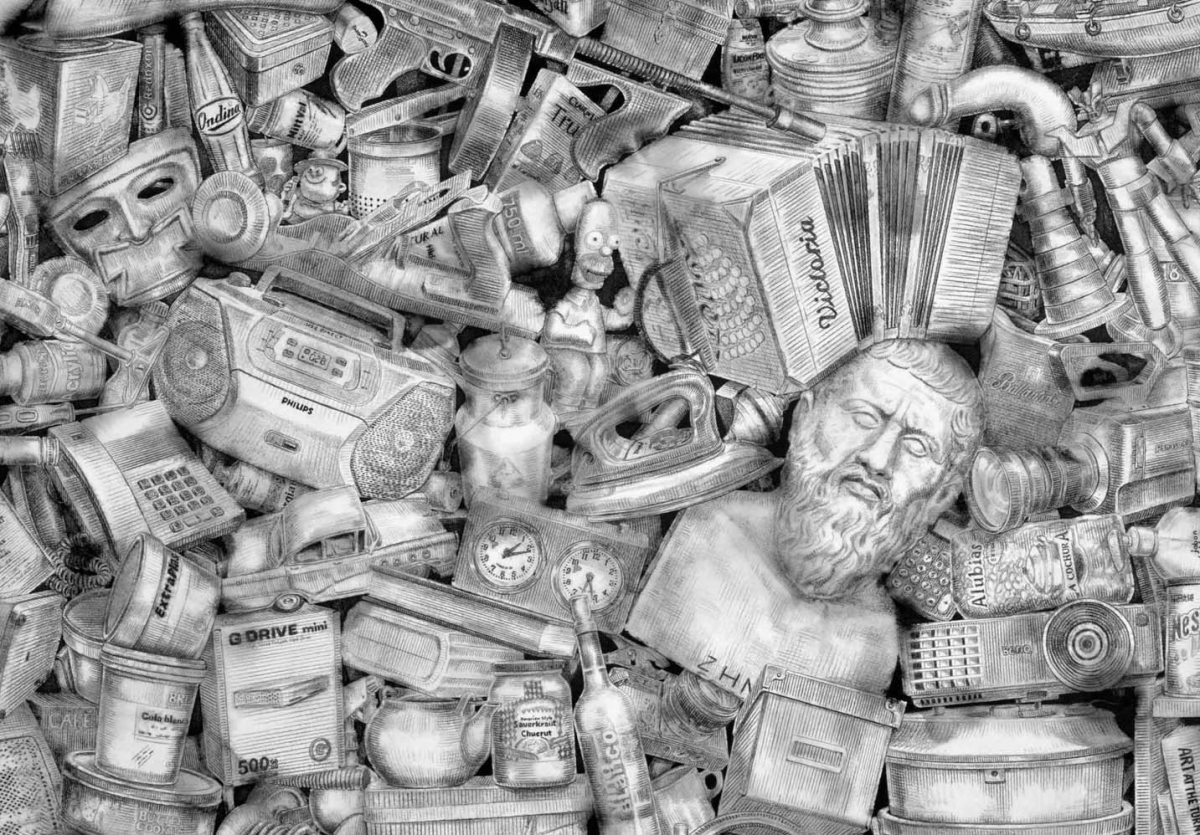
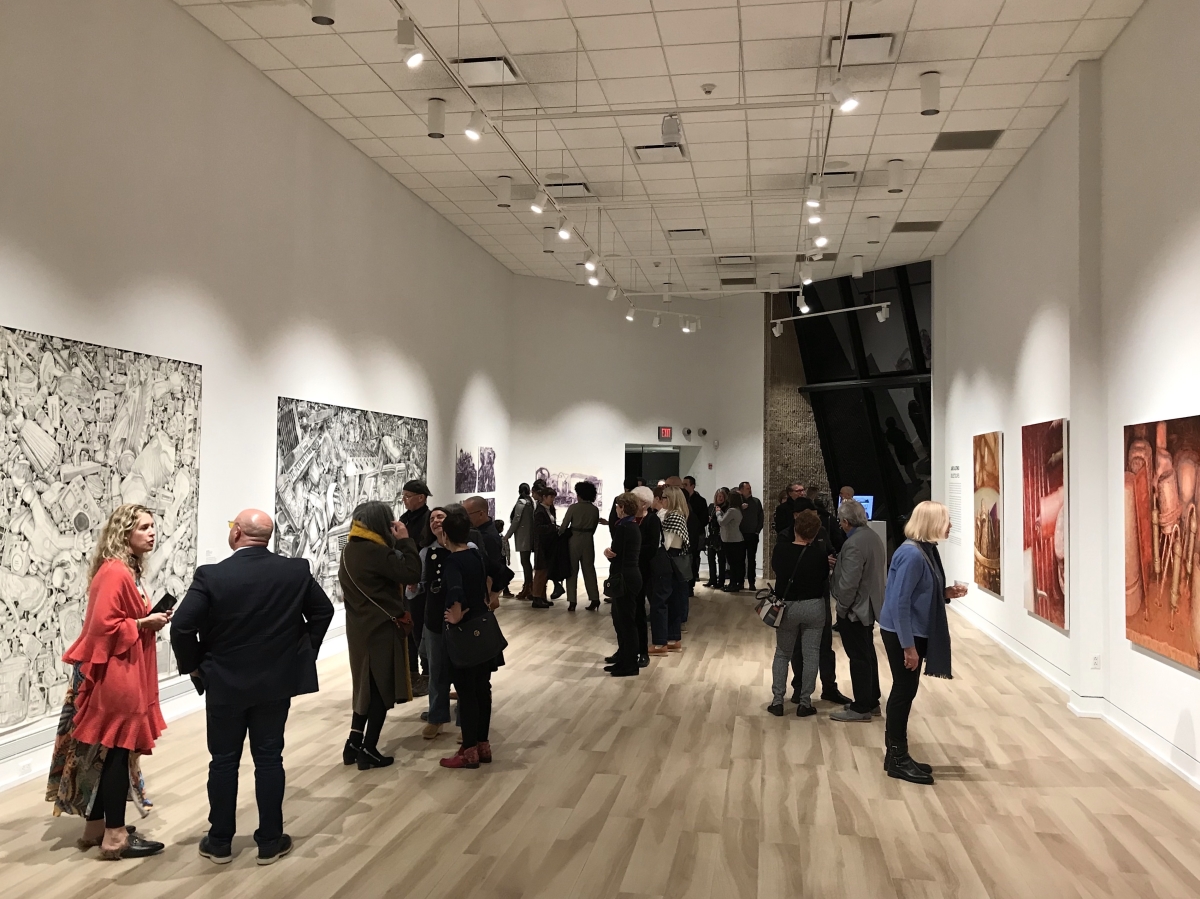
Ph courtesy of the artist
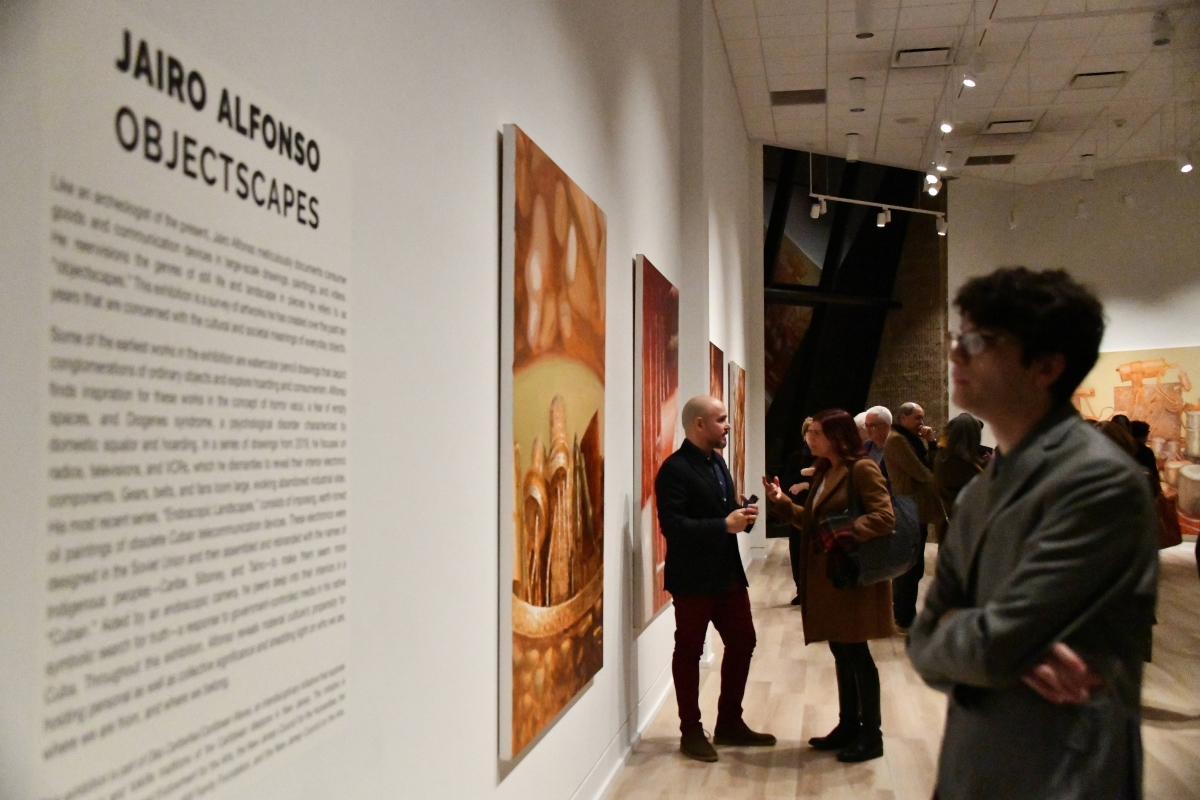
Ph courtesy of the artist
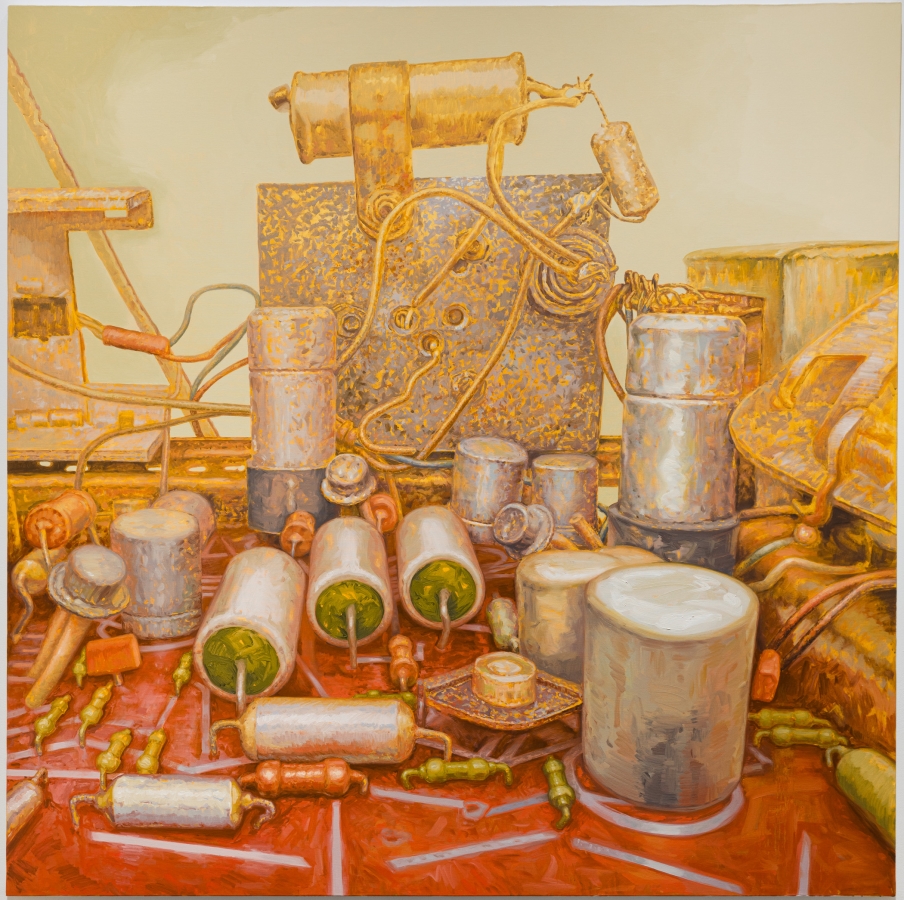
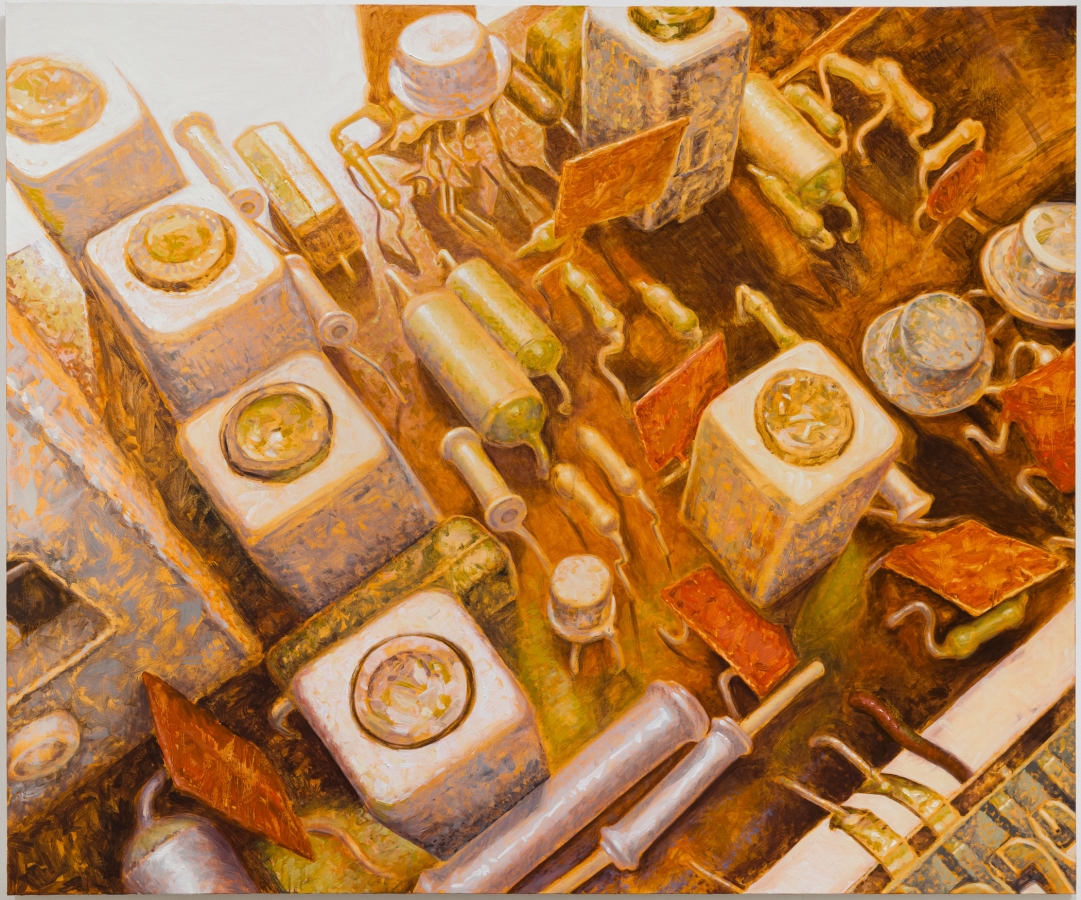
Ph Etienne Frossard
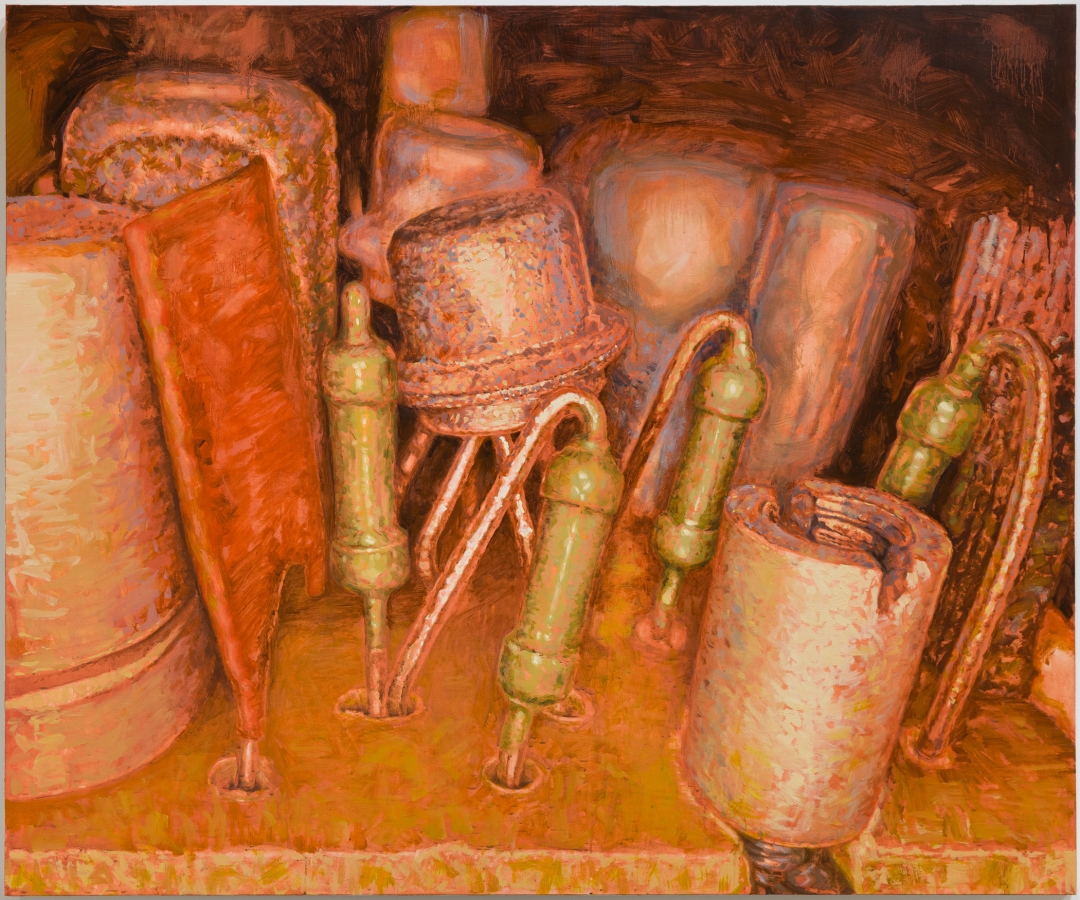
Ph Etienne Frossard
